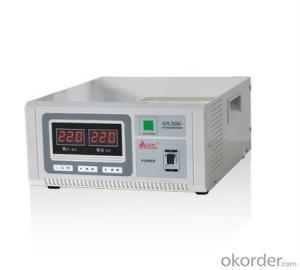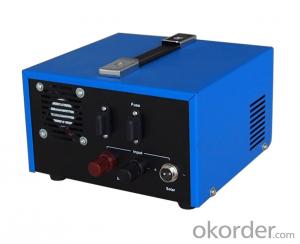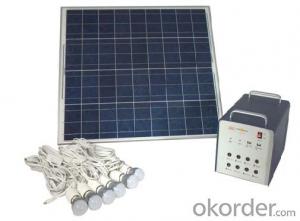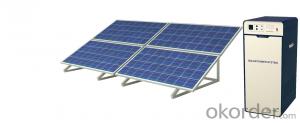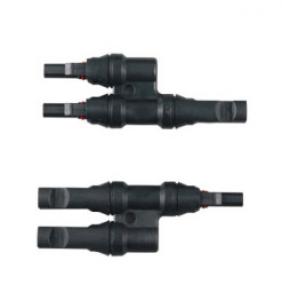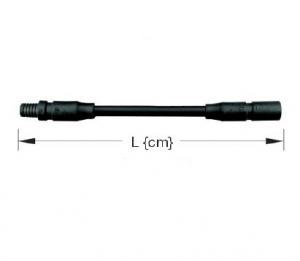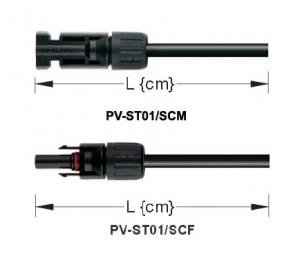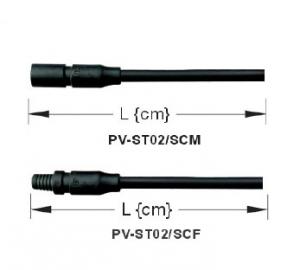Solar Energy Systems Trenton NJ Solar Cable Connector ST01 M F
- Loading Port:
- China Main Port
- Payment Terms:
- TT OR LC
- Min Order Qty:
- -
- Supply Capability:
- 10000 set/month
OKorder Service Pledge
OKorder Financial Service
You Might Also Like
Solar Cable-Connectors,Due to highly robustness,UV-resistance,the touch protection a high grade connection is guaranteed for many years
Rated voltage 1000 V
Rated current 22A
Protection degree(mated,junction box closed/unmated) IP67/IP2X
Operating temperature -40 °c to +85 °c
Contact material Copper,silver plated
Insulation materical PC/PA
Locking system Snap in
- Q: Solar photovoltaic system
- Analysis of economic benefits: 50kW distributed photovoltaic PV power plant total operating period: 25 years of this project on average generating capacity: the annual average generating capacity of 200kWh: 73000kWh, 25 years of total power: 1825000kWh residential electricity price: 0.55 yuan /kWh local coal-fired power benchmark price: 0.44 yuan /kWh (the case): Total investment the total investment of about 450 thousand yuan, equivalent to 9 yuan / watt.
- Q: What is a solar inverter and what does it do?
- The solar inverter is a crucial element in a solar power system, responsible for transforming the direct current (DC) electricity produced by solar panels into alternating current (AC) electricity, which is the type commonly used in households and businesses. When sunlight strikes the photovoltaic cells, solar panels generate DC electricity by creating an electrical charge. However, AC electricity is the primary power source for most household appliances and the power grid. Consequently, a solar inverter is necessary to convert the DC power from the solar panels into AC power suitable for operating household appliances or feeding back into the grid. In addition to converting electricity, solar inverters fulfill other vital tasks. They regulate voltage and current levels to ensure the produced electricity is safe and compatible with electrical devices. Furthermore, solar inverters incorporate a mechanism known as Maximum Power Point Tracking (MPPT) to optimize the energy output of the solar panels. MPPT adjusts the operating voltage and current of the solar panels to extract the maximum power, even in various weather and shading conditions. Moreover, solar inverters possess built-in safety features to safeguard the system and the electrical grid. They continually monitor the flow of electricity and promptly shut down the system in case of faults, such as short circuits or grid outages, to prevent any potential damage or injuries. In summary, the solar inverter plays an indispensable role in a solar power system, converting the DC electricity generated by solar panels into AC electricity necessary for powering homes, businesses, and the electrical grid. Moreover, it guarantees the secure and efficient operation of the system through voltage and current regulation, energy output optimization, and protection against faults.
- Q: Can solar energy systems be used for powering farms?
- Yes, solar energy systems can be used for powering farms. Solar panels can be installed on rooftops or open fields to capture sunlight and convert it into electricity. This electricity can then be used to power various farm operations such as irrigation systems, lighting, machinery, and even to generate heat for livestock. Additionally, solar energy systems can help farmers save on electricity bills, reduce their reliance on fossil fuels, and contribute to a more sustainable and environmentally-friendly agricultural practice.
- Q: Can I install solar panels myself?
- Yes, it is possible to install solar panels yourself, but it is recommended to hire a professional installer for safety and to ensure proper installation and system performance.
- Q: Can solar energy systems be used for powering mining operations?
- Yes, solar energy systems can be used for powering mining operations. Solar power can be harnessed through the installation of solar panels, which convert sunlight into electricity. This renewable energy source can provide a sustainable and cost-effective solution for powering mining operations, reducing reliance on fossil fuels and minimizing environmental impact. Additionally, solar energy can be integrated with energy storage systems to ensure a continuous power supply even during periods of low sunlight.
- Q: What are the different incentives available for installing solar energy systems?
- There are several incentives available for installing solar energy systems, which can make this renewable energy source more financially feasible for homeowners and businesses. One of the most common incentives is the federal investment tax credit (ITC). The ITC allows individuals or businesses to deduct a percentage of the cost of installing a solar system from their federal taxes. Currently, the ITC offers a 26% tax credit for residential systems and commercial systems installed before the end of 2022. Another incentive is net metering, which allows solar system owners to receive credit for the excess electricity their system generates and feeds back into the grid. With net metering, homeowners can offset their electricity bills by using these credits during times when their solar panels do not produce enough energy, such as at night or during cloudy days. Many states also offer additional incentives, such as grants, rebates, or performance-based incentives, to further encourage the adoption of solar energy systems. These incentives vary by state but can significantly reduce the upfront costs of installing solar panels. Some utility companies also provide incentives through solar renewable energy certificates (SRECs). SRECs are tradable credits that represent the environmental attributes of a certain amount of electricity generated from solar energy. By generating solar electricity, homeowners or businesses can earn these SRECs and sell them to utilities, providing an additional source of income. Lastly, some local governments offer property tax exemptions or deductions for installing solar energy systems. This means that the added value of the solar system to a property is not subject to increased property taxes, making solar installations financially more attractive. All of these incentives help offset the initial investment and ongoing costs of solar energy systems, making them a more viable and affordable option for those interested in adopting renewable energy and reducing their carbon footprint.
- Q: What is the lifespan of a solar energy system?
- The lifespan of a solar energy system typically ranges from 25 to 30 years.
- Q: How do solar energy systems impact wildlife habitats?
- Solar energy systems can have both positive and negative impacts on wildlife habitats. On the positive side, these systems do not emit greenhouse gases, reducing air pollution and mitigating climate change, which can benefit wildlife in the long run. Moreover, solar panels can be installed on rooftops or in non-intrusive areas, minimizing disturbance to wildlife habitats. However, large-scale solar projects can disrupt ecosystems by clearing land or displacing wildlife. Therefore, careful planning and implementation of solar energy systems are crucial to minimize negative impacts on wildlife habitats.
- Q: Can solar energy systems be used for powering off-grid emergency response centers?
- Yes, solar energy systems can be used to power off-grid emergency response centers. Solar panels can generate electricity by converting sunlight into usable energy, making them a reliable and sustainable power source for remote or off-grid locations. They can provide a continuous supply of electricity, even during emergencies or natural disasters, ensuring that critical equipment and communication systems in emergency response centers remain operational. Additionally, solar energy systems can be combined with energy storage solutions, such as batteries, to store excess electricity generated during the day for use during nighttime or cloudy periods. This makes solar energy an ideal solution for powering off-grid emergency response centers, as they offer independence from traditional power grids and reduce reliance on fossil fuels.
- Q: Can solar energy systems be used for powering military or defense installations?
- Yes, solar energy systems can definitely be used for powering military or defense installations. In fact, many military and defense organizations around the world are increasingly adopting solar energy systems as a reliable and sustainable source of power for their operations. There are several reasons why solar energy systems are suitable for military and defense installations. Firstly, solar power is a renewable energy source that is abundant and widely available. This means that military installations located in remote or off-grid areas can still have access to electricity without relying on traditional fossil fuel-based generators, which can be expensive and logistically challenging to transport and maintain. Secondly, solar energy systems offer a decentralized power supply option. This means that military installations can become less reliant on vulnerable and centralized power grids, reducing their susceptibility to power outages or attacks on critical infrastructure. Solar panels can be installed on rooftops, parking lots, or unused land within the military base, making effective use of available space. Furthermore, solar energy systems require minimal maintenance compared to traditional power generation methods. This is particularly advantageous for military or defense installations located in remote or hostile environments, where regular maintenance and fuel supply for generators may be difficult or risky. Solar panels are durable and have a long lifespan, requiring only periodic cleaning and routine inspections. In addition to their reliability and resilience, solar energy systems also offer economic benefits. By reducing reliance on fossil fuels, military installations can lower their operational costs and potentially save significant amounts of money in the long run. The funds saved can then be allocated to other critical defense needs or used for research and development of advanced military technologies. Moreover, deploying solar energy systems for military installations aligns with the global trend towards clean and sustainable energy solutions. It demonstrates a commitment to reducing greenhouse gas emissions and mitigating the impact of climate change, contributing to the overall sustainability goals of military organizations. Overall, solar energy systems are a viable and practical option for powering military or defense installations. They offer reliability, resilience, cost savings, and environmental benefits, making them an attractive choice for military organizations seeking to optimize their energy supply and reduce their carbon footprint.
Send your message to us
Solar Energy Systems Trenton NJ Solar Cable Connector ST01 M F
- Loading Port:
- China Main Port
- Payment Terms:
- TT OR LC
- Min Order Qty:
- -
- Supply Capability:
- 10000 set/month
OKorder Service Pledge
OKorder Financial Service
Similar products
Hot products
Hot Searches
Related keywords






